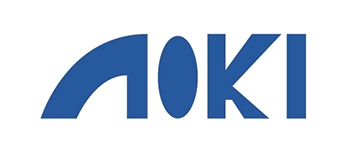Maido-1 Satellite Originator Toyohiko Aoki on Breakthrough Innovation Thinking
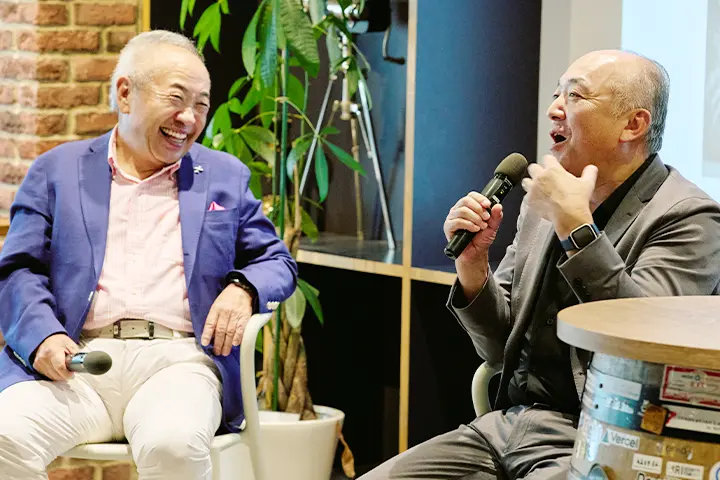
Around 35 years ago, Japanese companies dominated world market capitalization rankings, holding seven of the top 10 spots. By 2024, however, Japanese firms had zero presence in the top 10, with Toyota the last Japanese firm even to make the top 100. After its “lost 30 years,” the Japanese economy now stands on the brink of recovery. But to reassert its presence on the world stage, Japan will need to venture into radically new territory.
What are the keys to innovation? A group of small factories in Higashi-Osaka combined forces and managed to have their satellite launched. Aoki Inc. Chairman and originator of the Maido-1 satellite development project Toyohiko Aoki and Sumitomo Mitsui Financial Group Senior Managing Executive Officer Group CDIO (Chief Digital Innovation Officer) Akio Isowa, who other hat as Group Chief Digital Innovation Officer (CDIO) puts him in charge of driving digital innovation, explored the fascinating topic of breakthrough innovation thinking.
The Power to Overcome Difficulties by Laughing About Them
How did you originally meet Mr. Aoki, and what prompted this dialogue?
We first crossed paths several years ago. Not long after I became Managing Executive Officer, I went along to a lecture where Mr. Aoki was the speaker. With his broad Osaka dialect, he was a real contrast to the usual speakers. Afterwards, Mr. Aoki suggested that since we were all there, we might as well exchange business cards with him, and a long queue formed. But I didn’t want to be just another face in that crowd, so I kept hold of my business card and instead sent it along with a letter a few days later saying that I’d like to talk again.
I’m also a big fan of Mr. Aoki’s book. The small factory founded in Higashi-Osaka, a Japanese typical manufacturing district, overcame recession, worked with corporate majors, and even became a certified supplier of Boeing, the world’s largest aircraft manufacturer. Bear in mind that Mr. Aoki doesn’t speak English. As a Boeing-certified supplier, there must have been piles of detailed specifications and English documentation to deal with. I thought that the power to overcome difficulties like that by joking and laughing about them might be just what Japanese companies need to recover their lost momentum. I wanted to communicate that sense to the broader corporate community, which is why I requested this dialogue.
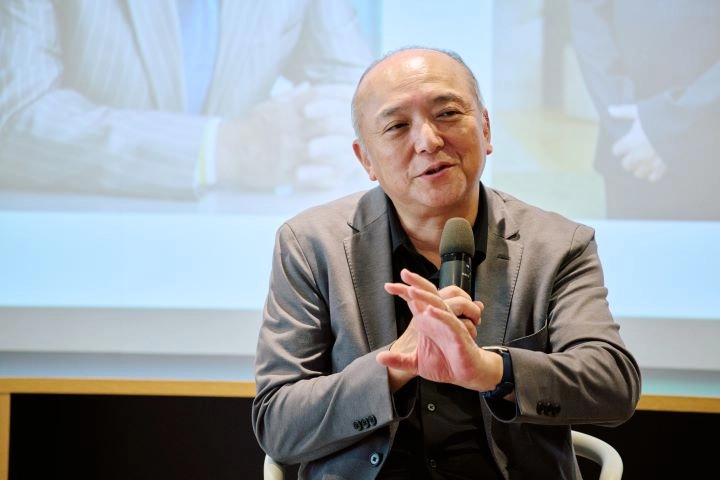
Engaged Collaboration Drove the Success of the Satellite Launch
Mr. Aoki, could you remind us of what prompted the Maido-1 satellite development project?
Back around 2000 when the project began, the economy was in an even worse state. All the Higashi-Osaka factories—about 12,000 at the time—were struggling. Going out around the community to see what could be done about this dire situation, I noticed that there were hardly any young people on factory floors. No young people means no successors. And without successors, no matter how skilled their craftsmen are, factories lose their vitality. We clearly had to find a way to make manufacturing interesting for the younger generation.
But we weren’t going to get far just standing at the door and inviting them in. We needed to display our technical capabilities and our ambition. That’s where I came up with the idea of the Maido-1 satellite launch project. So initially, the project was just a way to attract young people and get them excited about manufacturing, but it ended up having much more impact than that!
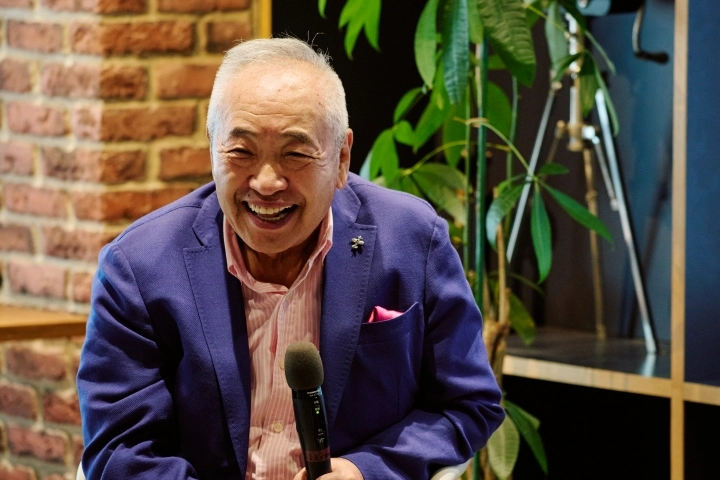
Looking back now, what do you think was the key to the project’s success?
Outreach. There’s a limit to what one person can do. You need to build connections.
For example, while Aoki Inc. had the technology and the confidence to make precision parts, we didn’t know much about space and needed someone to help. So we started with academia-industry collaboration. We visited organizations we’d never been to before, like the Japan Aerospace Exploration Agency, the University of Tokyo, and the Ministry of Economy, Trade and Industry (METI), asking for their help in building a satellite. I had always thought who needs Tokyo when there’s Osaka, but after going to Tokyo, I really felt the difference in organizational power, and I decided to leverage that.
Another crucial aspect was fundraising. The one billion yen that we needed was an impossible amount for small and medium enterprises (SMEs) to raise, so I went out door-knocking. It didn’t go too well at first, but a breakthrough came when an ad featuring our project was broadcast by Advertising Council Japan, which distributes public service announcements. The tide completely turned after that. It was also around that time that I got to meet then-Prime Minister Junichiro Koizumi.
A really big thing was managing to bring the chairman of a large client company on board. When he asked me if building a satellite was really going to revitalize Japan’s SMEs, I told him that if the project succeeded, Japan’s recession would end and Japan’s world-renowned SMEs would spring right back. Amused but intrigued, he ended up saying that, based on the success story that I had painted, he was prepared to stump up some cash. So now at least we had funding.
In the end, my presentation to METI went well and the Maido-1 development project was officially launched with the government’s blessing. I think knowing that I already had backing in place was what let me really slap my proposal down in front of the government. I went along with the attitude that this was the way to get Japanese SMEs back in the game and it was a case of pay up or lose out. I imagine I came across fairly forcefully!
Looking back, the important thing was engagement—reaching out and building connections. Many people just talk and don’t act. We need to connect. We need to work together.
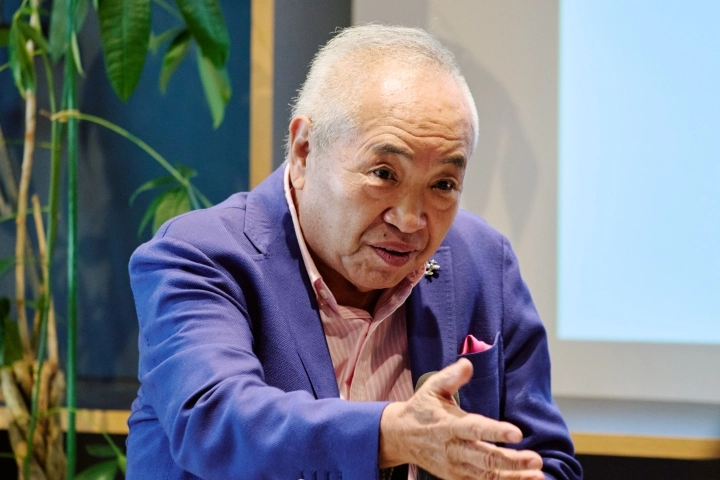
Innovation Driven by Fear
Mr. Isowa, you’ve spearheaded many projects that break traditional banking conventions, including revamping SMBC Direct and developing Bank Pay. How did you manage to realize such innovative initiatives?
I think a major factor was my grave concern about the bank’s future.
When I joined Sumitomo Bank, it stood third in global market capitalization rankings. When I say this now, people laugh, but I felt like I had joined the equivalent of today’s Microsoft. But things subsequently went rapidly downhill, and even our merger with another bank around 2000 failed to stop our performance from declining. A mountain of bad loans emerged, and at one point, we even racked up three shareholder meetings in one year. At the time, I was in charge of those meetings. I don’t think any bank had ever reduced capital before that.
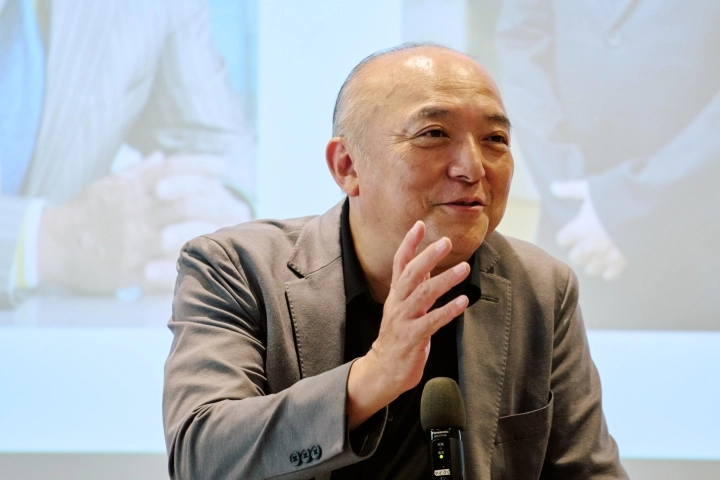
I was deeply afraid that if we continued like this, the bank would fail. Something had to be done. It was like being on a falling plane, where you just have to do whatever it takes to get the plane’s nose back up again.
It was right around then that I was given the mission of transforming our sales approach through digital technology. Knowing I couldn’t miss this chance, the first thing I addressed, just like Mr. Aoki, was outreach. I realized it would be difficult to digitalize just with bank personnel. I hired 63 digital professionals in one year, expanding what was then the Retail IT Strategy Department from seven to 70 people.
As a result, a string of ideas emerged that would never have occurred to bank personnel alone. One of these was Olive, an app that combines money management, payments, and a points system. Olive is now one of the SMBC Group’s key services, linked to three million accounts.
New initiatives don’t happen overnight. After we created the Olive prototype, it took 10 years to develop it into its current form. One important element of innovation is to take bold steps from a long-term perspective, without rushing.
Overcoming Opposition with a Sense of Mission and Small Successes
I imagine both of you have faced opposition to your projects. What factors have enabled you to succeed despite that?
I was certainly often told that what I wanted to do was impossible. My son had just joined the company, and he was often told “Where is your father going with this? The company will fail. A satellite—that’s ridiculous.” But I was driven by such a sense of mission. I just thought that I had to save Higashi-Osaka manufacturing.
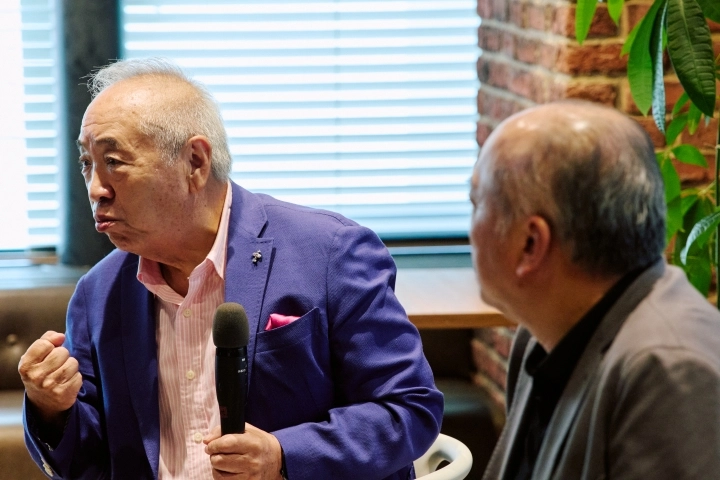
I met with opposition all the time too. Even our internet banking service SMBC Direct, which is now used as part of daily life, was resisted at first because it wouldn’t link directly to revenue. People said that SMBC Direct was just a customer portal and wouldn’t produce profits.
The reason that I managed to move projects forward despite resistance was that I was able to produce small successes quickly. In the case of SMBC Direct, a few tweaks that I made back when active user numbers were still low saw those numbers jump. The system had only around three million monthly users among the SMBC Group’s roughly 20 million customers, but it increased by nearly one million users almost overnight after the tweaks.
That’s when I started receiving proposals like, given how many people were now using the app, maybe we could make it possible for users to update their address information and open accounts through the app as well. A cycle emerged whereby when new features were added, user numbers rose, opening the way for more proposals for new features. Once this cycle developed, attitudes changed, and more and more people began to come on board.
Especially in big companies, realizing small successes quickly is hugely important for innovation. Small successes foster more successes, and the service grows.
Japanese Execs, Carpe Diem!
Finally, do you have a message for young executives as they tackle new challenges?
Be clear on your purpose. A clear purpose gives you confidence. Business ultimately comes down to a one-on-one battle where titles and company status don’t matter. When you’re standing out on the playing field, you can’t be intimidated by your opponent, even if they’re the president of a global corporation. Hold your ground, and things will sell themselves. But never lie. If you mess up, just apologize straight away.
Also, when your purpose is clear, you automatically understand what you’re lacking. Then it’s just about making yourself stronger. And if you want to be stronger, the best way is to let others make you strong. Build your strength while borrowing the strength of those around you.
I believe this moment presents a major business chance for young Japanese executives. Even as the post-global world splits increasingly into liberal and conservative camps, Japan remains a very stable environment. Japan is drawing attention around the world for its economic closeness to China and strong political ties with America. I think many young executives haven’t recognized that chance.
I’m telling you, even in my business career of 30-plus years, the current moment undoubtedly offers a golden business opportunity. Set aside your fear of failure and rise to the challenge. If you follow Mr. Aoki’s example and just go for it, a path will surely open for you.
-
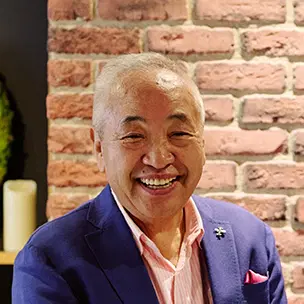
Goodwill ambassador for Higashi-Osaka Monozukuri (manufacturing with craftsmanship), Maido-1 satellite development project originator, and Aoki Inc. Chairman
Toyohiko Aoki
The central figure in the plan to launch a satellite made in Higashi-Osaka, a manufacturing town then comprising around 8,000 SMEs. Chairman of Higashi-Osaka’s space-related research group at the Higashi-Osaka Chamber of Commerce and Industry, established in July 2002. In December that year, he became chairman of the Space Oriented Higashi-Osaka Leading Association (SOHLA), established with five companies from the research group.
He turned his encounter with aerospace through rocket launch news footage he watched in elementary school and the moon rock he saw at Expo ’70 in Osaka into a lever for revitalizing his town. Always full of entrepreneurial spirit, he worked to open up new fields at his father’s company, which mainly manufactured agricultural machinery parts, and succeeded in expanding into robot and aircraft components. His belief that pride was essential to manufacturing elevated his company into a certified supplier for global aircraft manufacturer Boeing. His dream is to make the aerospace industry a local industry in Higashi-Osaka. He hopes to transform Osaka into a global marketplace with open market access that attracts young people for its vibrant manufacturing scene. -
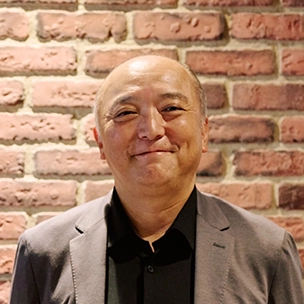
Group CDIO and Senior Managing Corporate Executive Officer, Sumitomo Mitsui Financial Group
Akio Isowa
Joined Sumitomo Mitsui Banking Corporation in 1990 and worked in corporate affairs, legal affairs, management planning, and human resources before setting up the then-Retail IT Strategy Department within the Retail Marketing Department as department director. As director of the Transaction Business Division, he spearheaded product and sales planning for corporate settlements. In 2022, he became director of the Digital Solution Division. He took up his current post in 2023, in which capacity he is driving digital strategy promotion for the SMBC Group.

